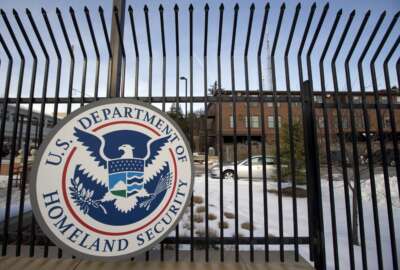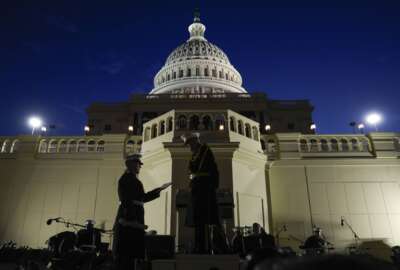
Insight by Booz Allen Hamilton
5 strategies for achieving an integrated delivery ecosystem
Federal agencies may face challenges with digital modernization. Shrinking budgets and increasing requirements raise the stakes on every decision that needs to be...
This content is provided by Booz Allen Hamilton.
Federal agencies may face challenges with digital modernization. Shrinking budgets and increasing requirements raise the stakes on every decision that needs to be made. Securing data against an ever-increasing array of attack vectors has to be balanced against the ability to innovate. New tools provide exciting new capabilities, but sprawl and complexity have to be contained. Legacy platforms are too expensive to maintain, and too outdated to deliver needed capabilities. So how can they make the right decisions to best accomplish their mission?
The answer may be an integrated delivery ecosystem.
“The move to an integrated delivery ecosystem is a journey, but has incredible potential to benefit your organization and its stakeholders,” said Patrick Kuo, digital practice leader at Booz Allen. “It means working across your agency to take an evolutionary approach, carefully consider your organizational needs and technology environment. A measured approach will produce the right path for your enterprise to come together on the right modern technology ecosystem, and supported by devsecops practices, all focused on delivering value to the mission as quickly, reliably and securely as possible. At Booz Allen we see integrated delivery ecosystems as a centerpiece that brings together cloud products, automation and orchestration tooling, and effective enterprise services.”
An integrated delivery ecosystem uses DevSecOps principles to reduce obstacles to application development while incorporating security earlier in the process to ensure risk is minimized. Standardizing tools and processes across the enterprise also allows for more collaboration while remaining cost effective.
“Federal executives want their funding going towards new capabilities and features for the mission, not being spent on infrastructure,” Kuo said. “Too much money is consumed now just keeping the lights on. Mission delivery demands are ever evolving and increasing in cadence. They want to skip over the technical burden and overhead and get to focusing on enabling the mission with more intelligence, more speed and responsiveness and more adaptability. Expectations from citizens for digital services are growing exponentially, and they use the commercial world as the benchmark.”
Booz Allen has identified five key factors for accomplishing these goals through an integrated delivery ecosystem:
- Define your strategy carefully – Consider what tools will work best for accomplishing the mission. Don’t waste time on solutions in search of a problem. The newest, most buzz-worthy technical solution may not apply to every situation. Look for opportunities to capitalize on modernization. What will benefit the organization most? Where can technology be applied most efficiently?
- Choose the right success criteria – Clear goals and well-defined metrics decrease risk, manage sprawl more effectively, and helps to break down silos and reduce technical debt.
- Be modular – Don’t get locked into technologies that will be obsolete in a few years. Open technologies, smart architecture and app scaffolding can help agencies build a future-proof infrastructure. “Modularity also provides an intentional on ramp for future technologies, and an easy, non-disruptive offramp for legacy components,” Kuo said.
- Take full advantage of automation – Allow humans to divest from repetitive, mundane work and instead focus on tasks that require critical thinking and judgement. That can help the workforce become more fulfilled while improving responsiveness and agility.
- Build in security at the core – End-to-end DevSecOps embeds security throughout the development process, allowing for faster iterations of creation, testing and deployment while mitigating risk throughout.
“At its core, our ecosystem viewpoint is focused on being an enabler for your application teams, empowering them with the right tool chain, and making them self sufficient and cross functional, creating, testing and deploying in a secure, highly automated manner,” Kuo said. “We’re also bringing together the many aspects of guidance and governance and value to the business. The ecosystem should natively contain all the preferred ways to do things and the tools to do them with, a factory that includes processes and procedures, technologies and integration patterns that are reusable and pluggable as new capabilities come into the marketplace.”
And most agencies already have many of these capabilities in place. Agencies governmentwide are moving to the cloud, implementing DevSecOps and agile methodologies, and exploring automation. An integrated delivery ecosystem focuses on aligning these capabilities to deliver the best outcomes for both an agencies workforce, and its customers.
With this method, app teams don’t have to worry about infrastructure engineering. The guardrails are defined by the enterprise and baked in to ensure repeatability, resilience, reliability and security. That allows the app teams to deliver value faster, with less work and greater consistency.
“This is an evolution, not a revolution,” Kuo said. “Take a thoughtful and intentional approach to carefully design the right steps for your needs in preparing the enterprise to converge on a modern technology ecosystem.”
Copyright © 2025 Federal News Network. All rights reserved. This website is not intended for users located within the European Economic Area.




